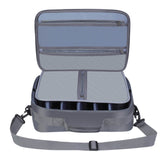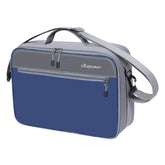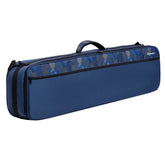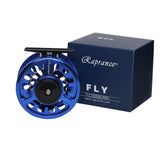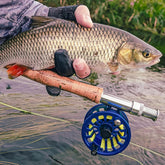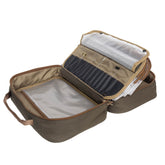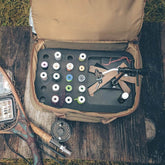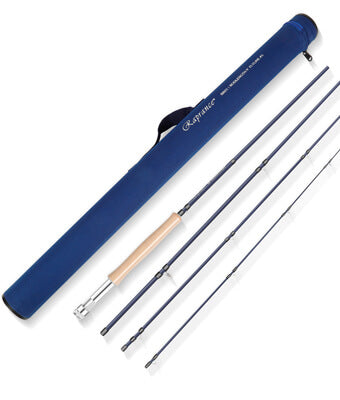Fly Reel: A Comprehensive Guide to the Best Options for Beginners and Lightweight Fishing
When it comes to fly fishing, choosing the right fly reel can make all the difference in your experience on the water. A lightweight fly reel is essential for beginners and seasoned anglers alike, offering both ease of use and functionality. I’ve spent hours researching and testing various models to find the best options available, and I’m excited to share my findings.

In this article, I will review several fly reels that stand out for their performance, durability, and value. Whether you're just starting your fly fishing journey or looking to upgrade your tackle box, there's something here for everyone. I'll focus on features that matter, like smooth drag systems, material quality, and user experiences, ensuring you have all the information you need to make an informed choice.
Join me as I explore the world of fly reels, highlighting the best picks for different skill levels and preferences. With the right fly reel, you'll enhance your casting, improve your hook-setting, and ultimately increase your chances of landing that perfect catch.
Understanding Fly Reels
A fly reel is an essential tool in fly fishing, impacting performance and functionality. I will cover the key components, types of drag systems, and the materials used in construction, which directly affect the reel's reliability and efficiency.
Components and Functionality
The primary components of a fly reel include the spool, drag system, and arbor. The spool holds the fly line and backing. A larger arbor allows for quicker line retrieval, which is beneficial during fast-paced fishing situations. The drag system plays a crucial role in controlling the resistance a fish feels when it pulls the line.
Key Components
- Spool: Holds the line and backing.
- Arbor: A larger arbor increases line pickup.
- Drag System: Regulates tension on the line during a fight.
These components work together to create a balance that is vital for successful casting and fighting fish.
Types of Drag Systems
Drag systems are crucial for controlling how line behaves under tension. There are two primary types: click-and-pawl and disc drag.
-
Click-and-Pawl: Offers a simplistic, mechanical approach, ideal for lighter lines and small fish. It provides a pleasant sound and a more traditional feel.
-
Disc Drag: Utilizes a series of discs that create friction. This system is more versatile and can handle larger fish and heavier lines. Often incorporates materials like carbon fiber for durability.
Some advanced options feature sealed drag systems, which protect against water and debris, enhancing performance in various conditions.
Materials and Construction
The choice of materials in fly reels impacts durability and aesthetics. Many high-quality reels are made from anodized aluminum, known for its resistance to corrosion and lightweight properties.
Common Materials
- Aluminum: Lightweight and robust.
- Carbon Fiber: Often used in drag systems for increased strength and weight reduction.
- Matte Black Finishes: Provide a sleek, modern appearance while resisting scratches.
Reels constructed from these materials ensure longevity and reliable performance across different fishing environments. I find that well-constructed reels can significantly enhance my fishing experience, providing the satisfaction of a successful catch.
Selecting the Right Fly Reel
Choosing the right fly reel is crucial for enhancing your fishing experience. Factors such as ease of use, weight, and suitability for specific fish species can greatly impact performance and enjoyment.
Reels for Beginners
When starting in fly fishing, I recommend selecting a reel that prioritizes simplicity and reliability. Look for affordable options that feature a comfortable drag system and smooth operation. The Cimarron Reel is a solid choice, as it balances quality with price.
Consider a reel that is pre-spooled or easy to configure. This can save time and frustration during your initial outings. A user-friendly interface allows beginners to focus on learning casting techniques and reading water conditions instead of grappling with complicated gear.
Lightweight Options
Weight plays a vital role in the comfort of a day spent on the water. Lightweight fly reels significantly reduce fatigue, particularly when casting for extended periods. I frequently opt for reels made of aluminum or composite materials, as they offer durability without the added weight.
In addition to material, consider the size of the reel in relation to your rod. A well-balanced setup enhances casting accuracy and reduces strain. Popular lightweight choices often come in models optimized for both freshwater and saltwater use, making them versatile for various angling situations.
Targeting Specific Species
When targeting specific species, it's essential to match the reel's features with the fish you're pursuing. For instance, if I am going after saltwater species like tarpon, I prioritize a reel with a robust drag system. This ensures it can handle the high energy and size of these fish.
In freshwater scenarios, a lighter drag often suffices when targeting species such as trout or panfish. Always check the reel's specifications and performance history to verify it can meet the demands of the species you're interested in.
By considering these factors, I can make an informed choice that enhances my fly fishing experience.
Top Fly Reel Recommendations
In selecting a fly reel, I prioritize performance, weight, and user experience. The following recommendations highlight the best options tailored for various needs, ensuring an enjoyable fishing experience.
Best Overall Fly Reels
When considering the best overall fly reel, the Orvis Hydros stands out. It offers a perfect blend of lightweight design and durability, providing smooth performance that's essential for various fishing conditions. With a mid-arbor design, it allows for quicker line retrieval and improved backing capacity.
Another excellent choice is the Sage Spectrum. With its robust construction and excellent drag system, the Spectrum effectively manages larger fish while remaining user-friendly. It’s worth noting that both reels have received high ratings in customer reviews for their reliability and performance.
Top Lightweight Reels
For those seeking lightweight options, the Cimarron Reel is an excellent choice. Weighing significantly less than many competitors, it does not compromise on performance. Its durable materials ensure longevity, and the easy-to-use features make it suitable for anglers of all skill levels.
Another lightweight option is the Redington Behemoth. Despite its lightweight construction, it offers an impressive drag system. My experience has shown that this combo of lightweight and strong performance enhances fishing efficiency.
Reels for Beginners
As a beginner, choosing the right fly reel can impact the learning curve. The Pflueger Medalist is often highlighted for its affordability and ease of use. This reel allows new anglers to transition smoothly into fly fishing without feeling overwhelmed.
Additionally, the Orvis Clearwater is another fantastic entry-level option. It is user-friendly with a sturdy build and consistent drag performance. Both models come recommended in numerous fly reel reviews for their reliability and performance, making them ideal starting points for novices.

